Vanke Business Center, Foshan, Guangdong, China
Monday–Friday,
10:00–19:00 (UTC+8)
Vanke Business Center, Foshan, Guangdong, China
Monday–Friday,
10:00–19:00 (UTC+8)

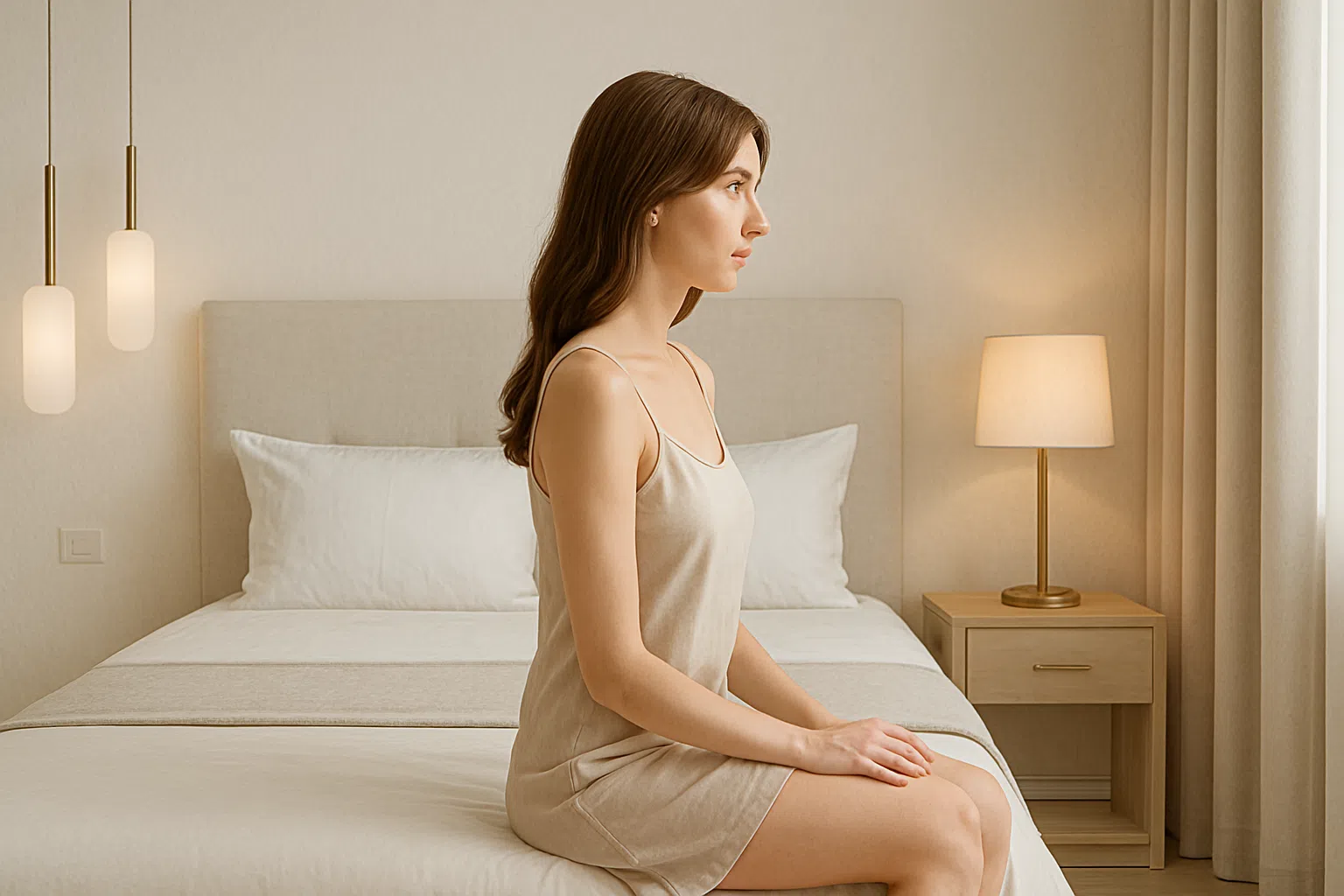
We cover international bed sizes, tips on measuring your room, types of bed frames and materials, mattress types and mattress firmness, bedding essentials, special considerations for various needs, and a final checklist of buying tips.
By the end of this guide, you'll be equipped with expert knowledge to make an informed decision. Whether you're furnishing a main bedroom for a family home or looking for the best bed for a small room, we aim to help you find the ideal bed for a great night's sleep.
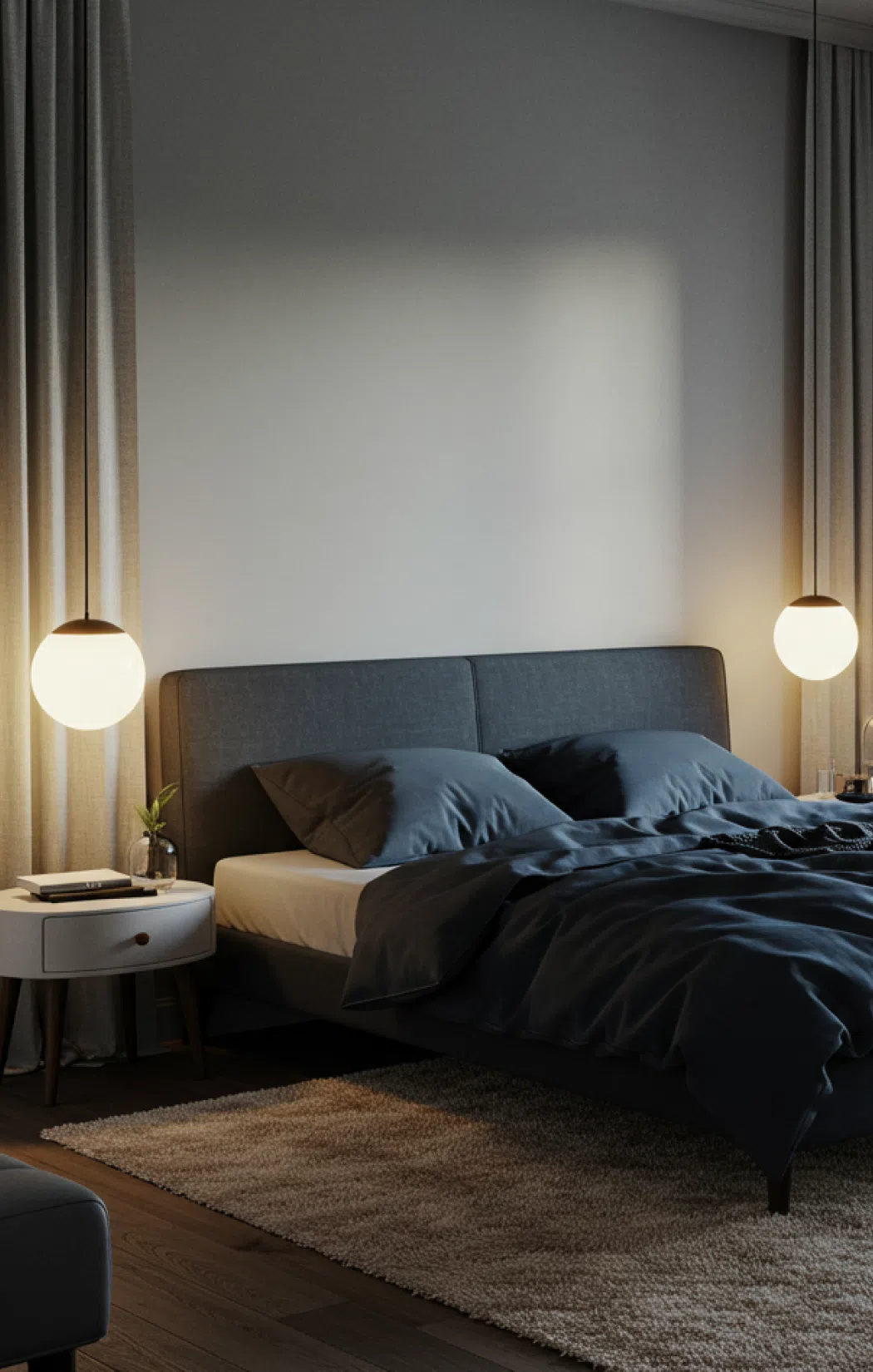
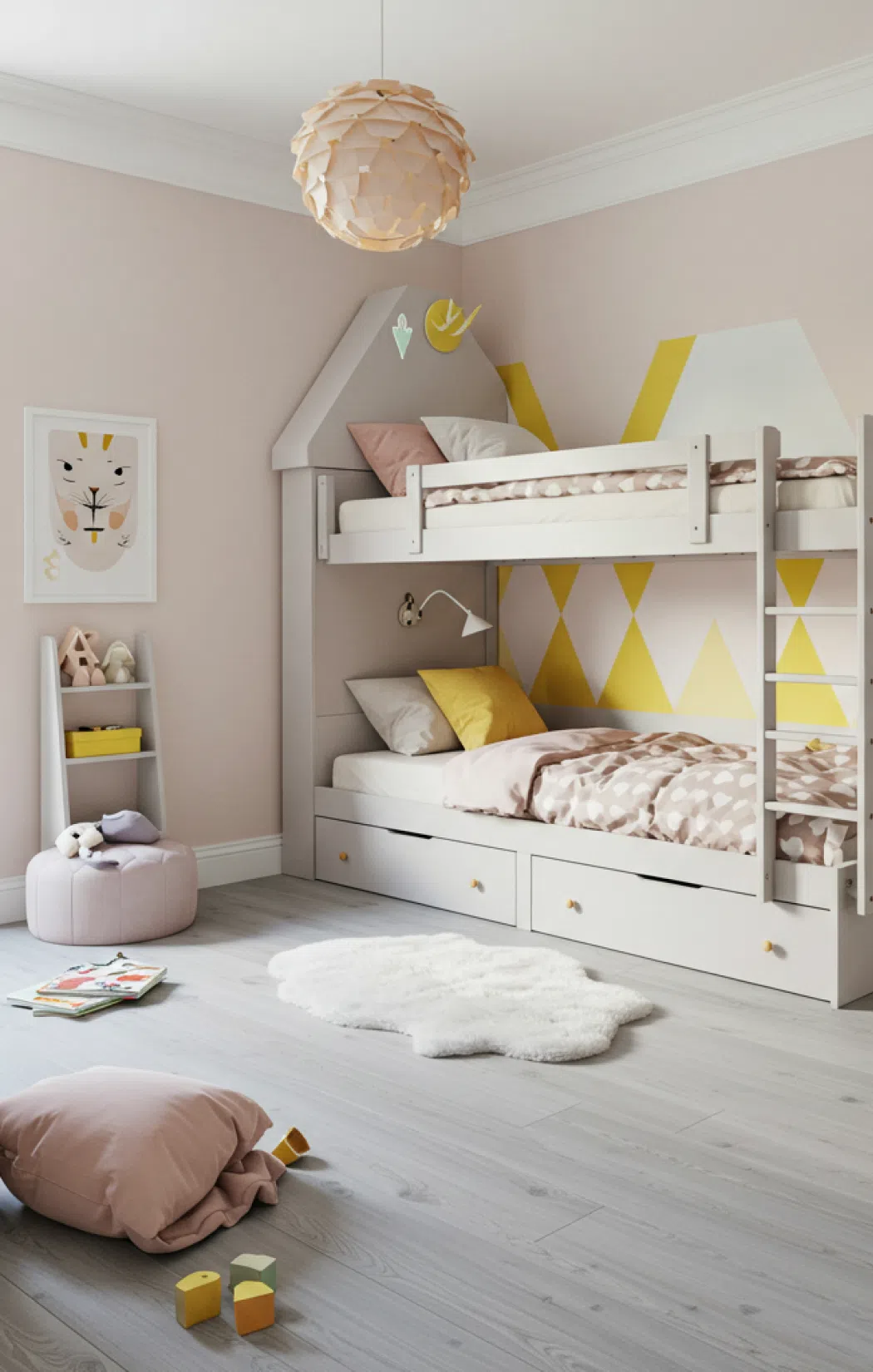
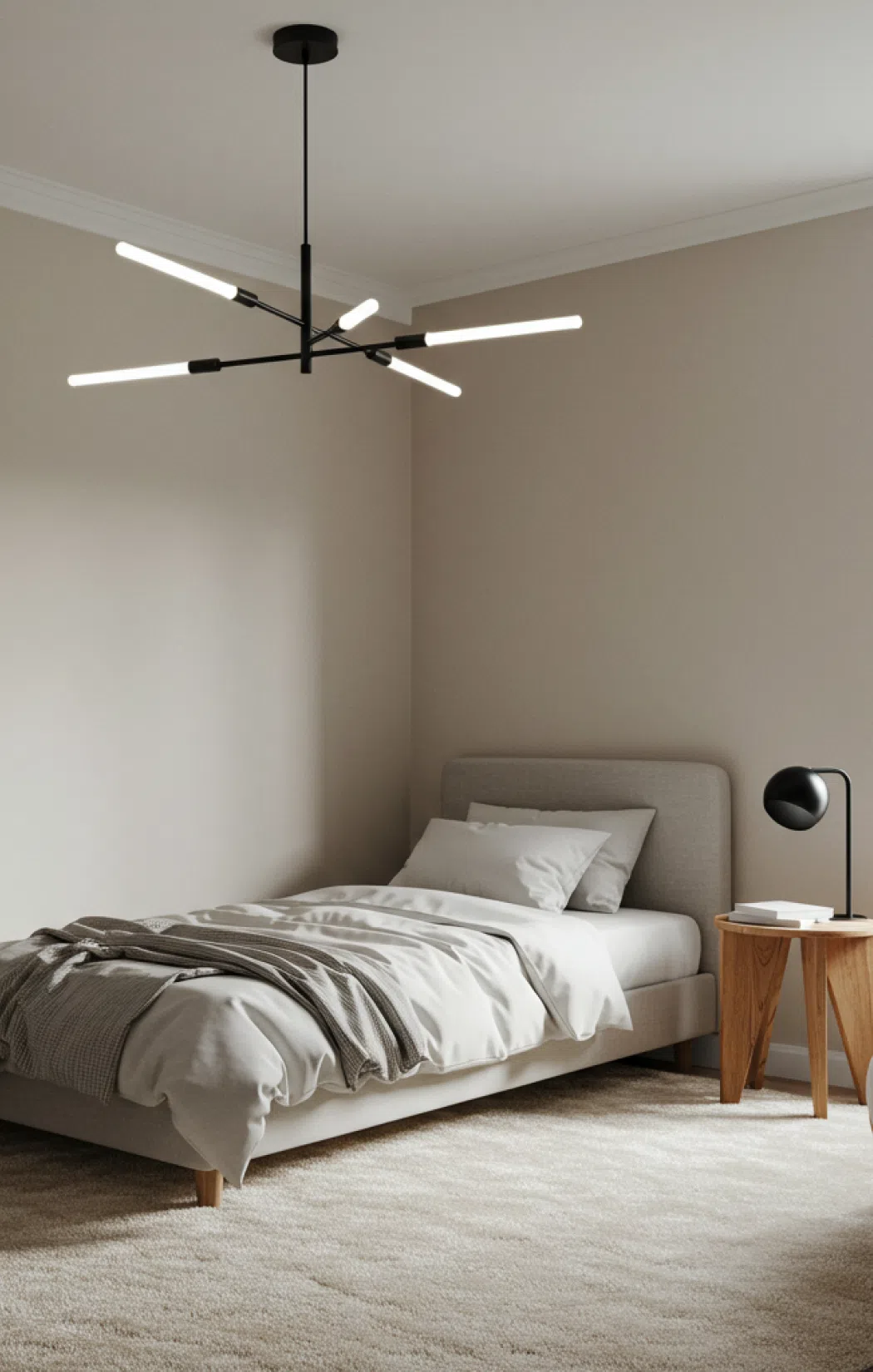
Bed sizes vary worldwide, so it's essential to understand dimension standards in different regions. Knowing the exact mattress dimensions will ensure your bed fits your bedroom and bedding accessories properly. Below is a bed size guide for common standards in North America, the UK, Europe, and Australia.
In the United States and Canada, mattresses have non-numeric labels but are defined by standard inches (with approximate metric equivalents):
Twin (Single) – ~39″ x 75″ (99 x 191 cm). Suitable for children’s rooms or solo sleepers in small spaces.
Twin XL – ~39″ x 80″ (99 x 203 cm). It adds 5 inches of length, which is great for taller teens or dorm rooms.
Full (Double) – ~54″ x 75″ (137 x 191 cm). Offers more width for a single adult or a cozy fit for two.
Queen – ~60″ x 80″ (152 x 203 cm). Spacious for a single person, it is the standard choice for most couples.
King – ~76″ x 80″ (193 x 203 cm). It provides ample width, ideal for couples wanting maximum space.
California King – ~72″ x 84″ (183 x 213 cm). Slightly narrower than a standard King but longer. Suited for tall individuals up to about 7 feet tall.
The UK uses its own naming system, measured by mattress size:
Single – 36″ x 75″ (91 x 191 cm). Similar to a US Twin.
Double – 54″ x 75″ (137 x 191 cm). Close to a US Full.
King – 60″ x 78″ (152 x 198 cm). It is slightly shorter than a US Queen but has the same width.
Super King – 72″ x 78″ (183 x 198 cm). Provides king-width space with a bit less length than US King.
Some UK retailers use the term "Queen" for a size that may correspond to either a Small Double or a Super King, which varies by retailer.
European mattress sizes are typically in centimeters and tend to be longer:
Single – 90 x 200 cm (approx. 35″ x 79″).
Double – 140 x 200 cm (approx. 55″ x 79″).
Queen – 160 x 200 cm (approx. 63″ x 79″).
King – 180 x 200 cm (approx. 71″ x 79″).
Many European beds are 200 cm (79 in) long as a standard, which is slightly longer than some UK equivalents.
Australia has its own set of standard sizes, including some unique ones:
Single – 92 x 188 cm (36″ x 74″).
Long Single – 92 x 203 cm (36″ x 80″), similar to a Twin XL for taller sleepers.
King Single – 107 x 203 cm (42″ x 80″), wider than a twin, suitable for teenagers or anyone wanting more width in a single bed.
Double – 138 x 188 cm (54″ x 74″).
Queen – 153 x 203 cm (60″ x 80″).
King – 183 x 203 cm (72″ x 80″).
Super King – 204 x 204 cm (80″ x 80″), an extra-large square mattress for maximum comfort.
If you're torn between a queen-size bed and a king-size bed, consider your room size and sleeping needs. A king-size bed offers extra personal space but requires a large bedroom (ideally at least 12 x 12 feet). A queen-size bed is often the best for smaller master bedrooms, balancing space and comfort.
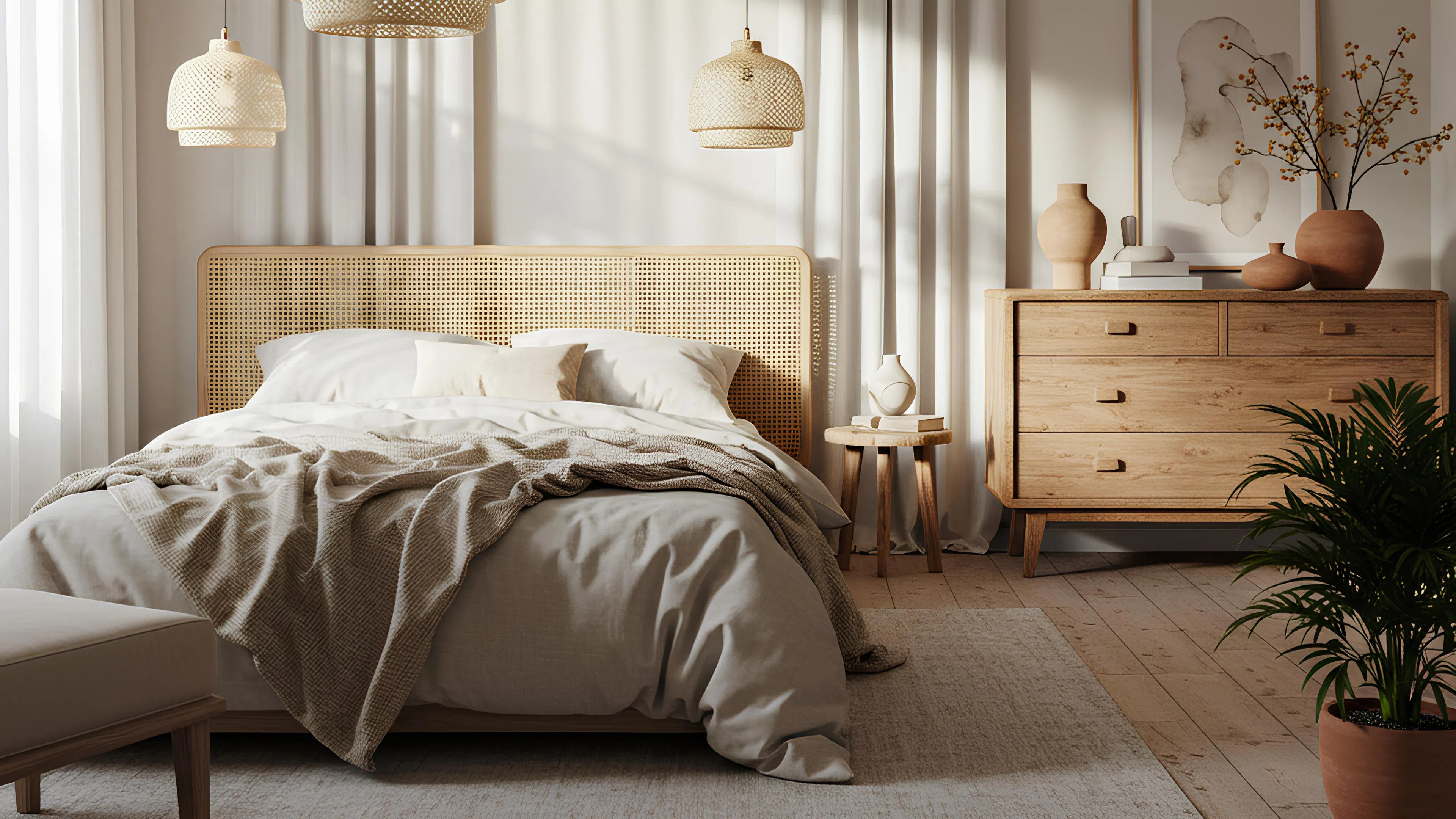
Before buying a bed, it is crucial to measure your bedroom and plan the layout. This ensures that your bed will fit comfortably without overcrowding the room.
Measure floor space. Determine the maximum bed dimensions that your room can accommodate. Measure the length and width of the area where you plan to place the bed. Remember to account for space to walk around the bed and room for other furniture (nightstands, dresser, etc.).
Allow clearance. Leave enough open space around the bed. A good rule of thumb is to have at least 24 inches (61 cm) of clearance on the sides and foot of the bed for easy movement, with 36 inches (91 cm) being ideal. This provides a comfortable walkway and makes it easier to make the bed.
Consider doorways and furniture. Measure the widths of doors, stairwells, or tight corners through which the mattress and bed frame must pass during delivery. Also, ensure room to open closet and bedroom doors without hitting the bed. If you plan on a footboard or bench at the end of the bed, include extra space for those as well.
Visualize with tape. It can be helpful to outline the bed's footprint on your floor using painter's tape or cardboard. This trick lets you see how much floor area the bed will occupy and how much space will remain around it.
When measuring your space, remember to consider bed height. The average bed (frame + mattress) is around 24 inches high, roughly at knee level. If you have low ceilings or plan to use a tall mattress and box spring, ensure the bed isn't so high that it feels awkward. Likewise, an older adult might prefer a bed height that allows them to sit and stand up easily (their feet should be flat on the floor when seated on the edge).
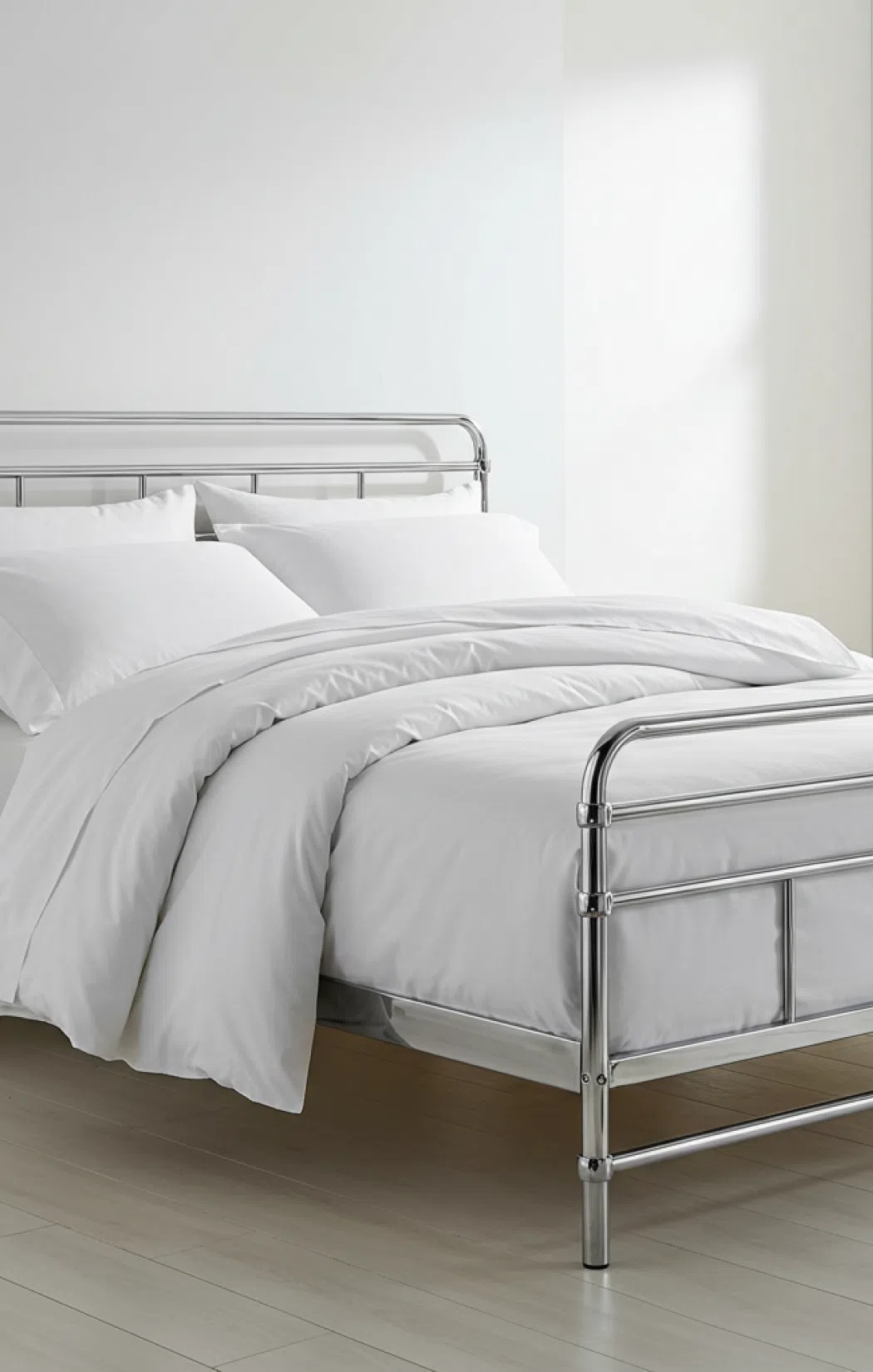
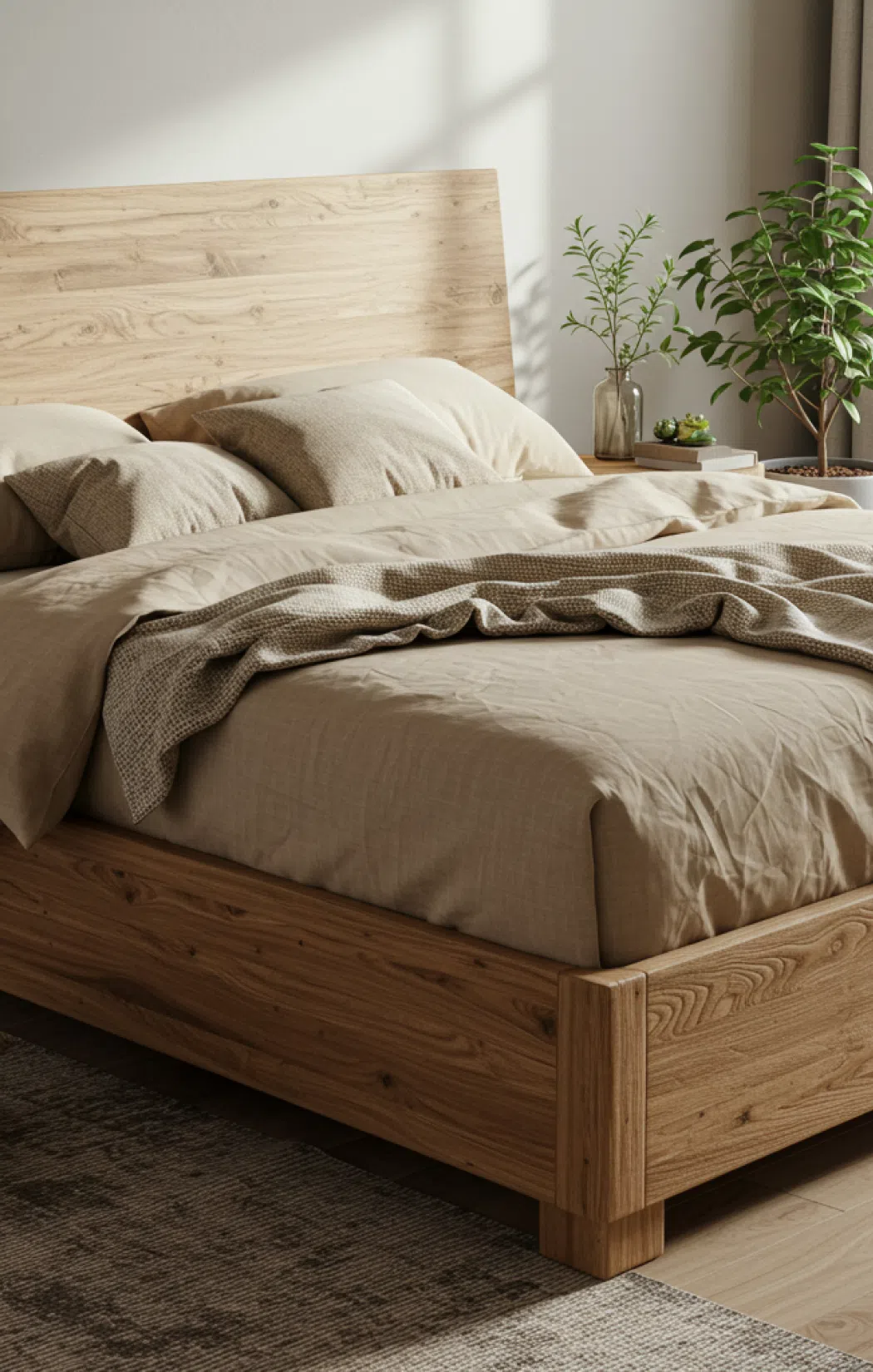
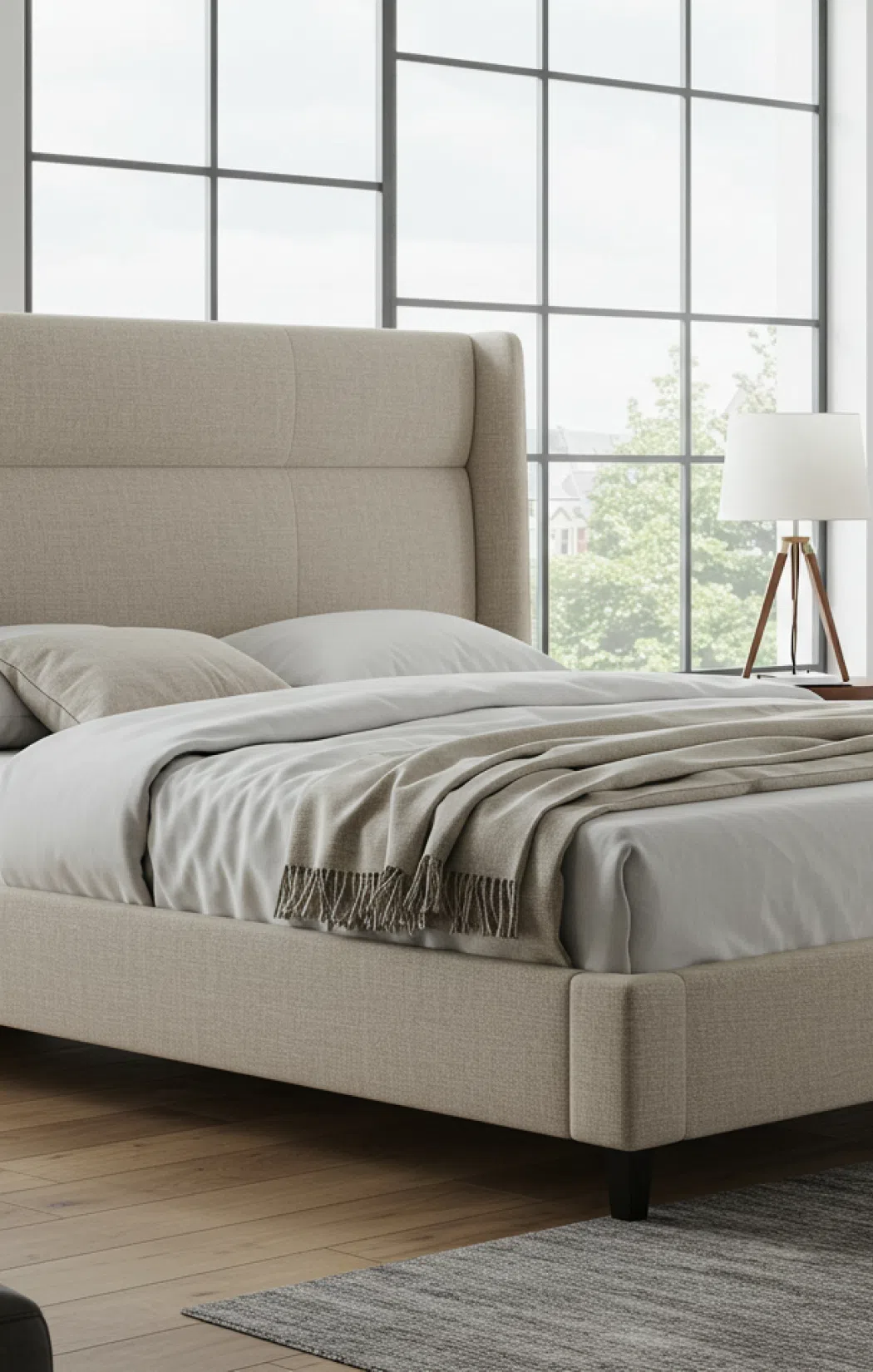
The bed frame is the foundation of your bed setup, influencing the interior's style, height, and mattress support. We'll outline the common types of bed frames and the materials they are made of so you can choose a frame that fits your bedroom's aesthetic and your practical needs.
Platform beds. A platform bed has a solid or slatted base that supports the mattress without needing a box spring. It sits lower to the ground, creating a modern, low-profile look. Platform beds offer sturdy support and often provide storage options underneath if raised on legs.
Storage beds. These frames integrate storage drawers or compartments into the bed base. Examples are ottoman beds (with gas-lift hydraulic frames that lift the mattress to reveal storage) and captain's beds (with built-in drawers). Storage beds are excellent for small rooms where you need to utilize under-bed space.
Adjustable beds. An adjustable bed frame (often powered by electric motors) lets you elevate the mattress's head and/or foot. These beds can be helpful for people with medical needs, snoring issues, or anyone who enjoys reading or watching TV in bed. For an adjustable base, you'll need a compatible flexible mattress (such as certain foam or hybrid mattresses).
Traditional bed frames. This category includes classic designs like four-poster beds, sleigh beds, and those that use a separate box spring or foundation. A traditional frame usually sits at a standard height and may come with a headboard and footboard for a more formal look. They can require a box spring for proper mattress height and support (unless the frame has slats). Traditional frames add a timeless style element to a bedroom.
Wood. Wooden bed frames (solid wood or engineered wood) are sturdy and offer a classic or rustic appearance. Hardwoods like oak, maple, or mahogany provide durability, while pine or composite woods can be more affordable. Wood frames can be painted or stained to various finishes. Ensure the wood is properly cured and of good quality to avoid warping.
Metal. Metal frames (iron, steel, or brass) range from basic metal rail frames to ornate wrought-iron headboards. Metal beds are generally durable and lighter in visual weight — great for an airy, minimalist vibe. They are also often easy to disassemble. Check for quality welding and a stable design; lower-quality metal frames might squeak over time.
Upholstered. Upholstered beds offer a soft, cozy look and a comfortable surface to lean on when sitting up. Common upholstery materials include linen, cotton, velvet, or faux leather in various colors. Remember that fabric can stain or wear over time, so consider the cleanability and durability (many come with removable covers or stain-resistant fabric).
Mixed materials. Some modern designs combine materials, like a wood frame with metal accents or an upholstered headboard with wooden side rails. The goal is to get the aesthetic and functional benefits of each material.
Each frame type and material has pros and cons. For example, a metal platform bed might give an interior a sleek, industrial look. In contrast, a traditional wooden sleigh bed becomes a classic centerpiece but occupies more visual space. Consider the style of your room, the need for storage, and how much weight/strain the frame will bear, especially if you plan to use a heavy mattress. Ensure the frame's construction and legs are robust.
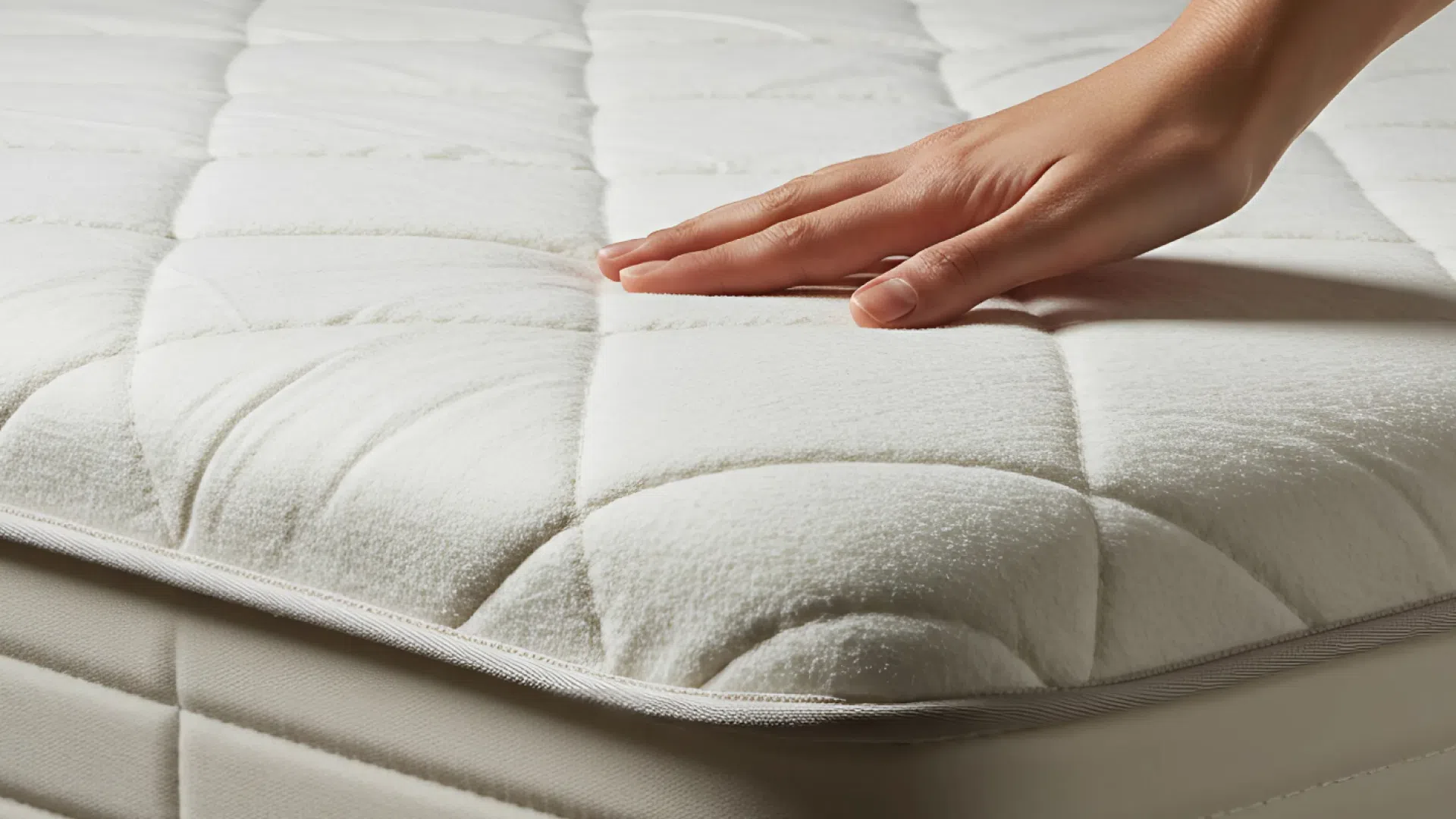
The mattress is arguably the most essential part of your bed — it determines the comfort and quality of sleep. Knowing how to choose a mattress that suits your body and sleep style is crucial. In this section, we'll compare mattress types and then discuss firmness levels, including the best mattress options for back pain or other needs.
Innerspring mattress. An innerspring is a traditional mattress type that uses steel coils for support, topped with layers of padding. It tends to be bouncy and has good airflow. Quality can vary based on coil count and construction (Bonnell, pocket springs, etc.). Innersprings suit those who like a more resilient feel and easy movement. However, they might transfer motion if coils aren't individually wrapped, and cheaper ones can develop sagging over time.
Memory foam mattress. Memory foam beds are made of high-density polyurethane foam that contours closely to the body. They excel at pressure relief and are great for side sleepers needing cushion for hips and shoulders. They also minimize motion transfer — so you won't feel a partner tossing. On the downside, traditional memory foam can retain heat (though gel-infused or open-cell foams try to mitigate this) and can feel uncomfortable to those who prefer a responsive surface.
Latex mattress. Latex mattresses can be natural (from rubber tree sap) or synthetic. They are responsive and bouncy like innerspring but also contouring and pressure-relieving, similar to foam. Latex is naturally hypoallergenic and durable and tends to stay cooler. These mattresses often have a higher price tag, but they're great for those who want a balance of comfort and support and prefer natural materials.
Hybrid mattress. Hybrid mattresses combine an innerspring coil base with significant foam or latex comfort layers on top. The idea is to offer the best of both — the support and airflow of coils with the cushioning of foam/latex. Many modern brands produce hybrid mattresses. They can suit a wide range of sleepers because their feel can be tuned by manufacturers (plush to firm). If you share the bed, look for hybrids with quality pocketed coils and good edge support, so it doesn't compress too much at the sides.
Air mattress. Air mattresses use air chambers as the support core, allowing you to adjust firmness by adding or removing air. Often each side is adjustable independently, making them popular for couples with different preferences. They typically have foam or pillow-top layers above the air chambers for comfort. Airbeds can be ideal if you want customizable firmness or have changing needs. However, they are usually expensive and involve mechanical components that could require maintenance.
Smart mattress. A newer category, smart mattresses include integrated technology — such as sensors to track sleep quality, adjustable firmness or temperature settings, or automatic adjustments throughout the night. Some smart beds are essentially advanced air beds or waterbeds with smartphone connectivity, while others track data (heart rate and movement) to help you optimize sleep. A smart mattress might appeal if you love tech and data or want features like warming/cooling or anti-snore adjustments. Just be prepared for a premium price and ensure the tech features you will use.
Mattress firmness is typically rated from soft to firm (sometimes numerically 1-10, with 1 being ultra-plush and 10 being very hard). The right firmness depends on your sleeping position, body weight, and personal comfort preference:
Soft (plush). These mattresses (around 3-4 out of 10 on firmness) allow you to sink in deeply. They can feel like "sleeping in a cloud" and are often favored by side sleepers or lighter-weight individuals who need extra cushioning for joints. However, very soft beds might not provide enough support for heavier individuals, potentially causing spine misalignment.
Medium to medium-firm. These mattresses range from 5 to 7 out of 10. This middle ground tends to suit a broad range of people, especially combination sleepers (those who change positions). It's soft enough to provide comfort and relieve pressure yet firm enough to support the spine. Many experts consider medium-firm mattresses the best choice for managing back pain, as they support natural alignment while still contouring the body.
Firm. Firm mattresses (around 8-10 out of 10) have minimal sinks. They keep you "on top" of the bed. Back and stomach sleepers often prefer firmer beds to prevent hips from sagging and keep the spine aligned. A firm bed can also feel good to heavier individuals who might sink too much into a soft mattress. However, an overly hard mattress can create pressure points. Interestingly, extremely hard beds are not always best for back pain — a very stiff surface might lead to discomfort. A balanced medium firm is usually a safer option for orthopedic support.
If you share a bed, you may want a mattress with a compromise feel or one that isn't too extreme on either end. Many couples gravitate to the medium-firm range for this reason.
The best mattress for back pain is often a medium-firm hybrid or foam that supports your spine while relieving pressure. If you have chronic back issues, consider a mattress with zoned support (firmer in the lumbar area). Always try to test a mattress for a few nights if possible — many brands offer trial periods so you can ensure it suits you.
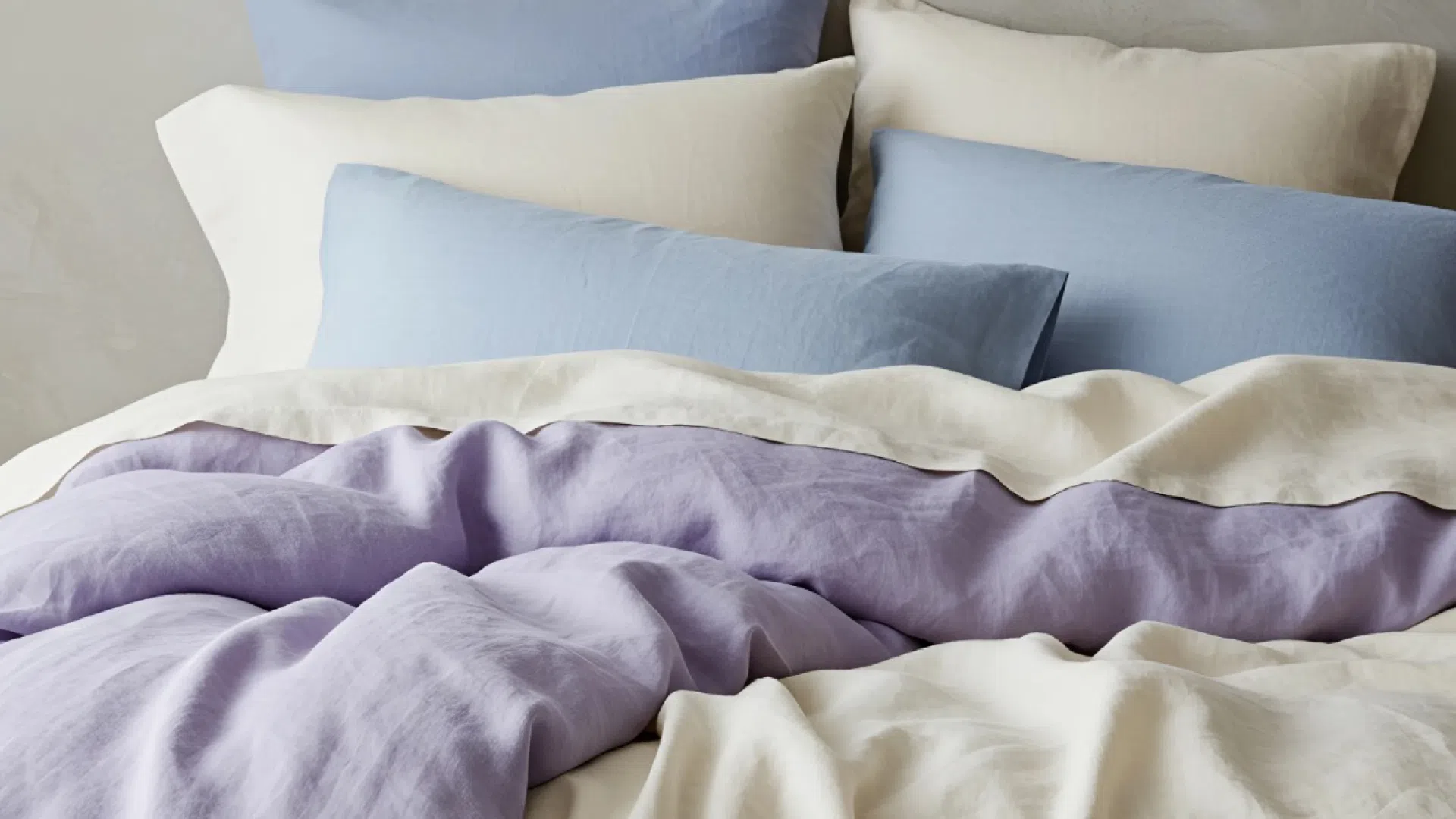
Once you have chosen the bed frame and mattress, you'll want the right bedding to complete your perfect bed. Bedding not only adds comfort but also affects your sleep temperature, hygiene, and overall sleep experience. We'll discuss pillow selection, sheet sizing, thread count, and how to layer blankets, quilts, or duvets for maximum coziness.
A good pillow is essential for proper neck support and comfort. Pillows come in various thickness levels, and the best one for you depends on your sleeping position and preferences:
Fill types. Common pillow fills include memory foam (contouring, good for neck support), latex (responsive and cooling), feather/down (soft and shapeable, can be fluffed), polyester fiberfill (affordable, washable, but less supportive), and newer fills like shredded foam or buckwheat hulls (adjustable).
Sleeping position. Side sleepers usually need a thicker pillow to keep their heads aligned with the spine, filling the space between shoulder and neck. Back sleepers prefer a medium-loft pillow — enough to support the neck's natural curve without pushing the head forward. Stomach sleepers need a thin, soft pillow (sometimes none) to avoid arching the neck backward. Choosing the right pillow can prevent morning neck pain and improve overall spinal alignment at night.
Size and quantity. Standard pillow sizes (Standard, Queen, King) should correspond to bed size and personal taste. For a Queen or King bed, many people use two pillows per person (a combination of a sleeping pillow and an extra for reading or decoration). Ensure your pillowcases match the pillow size; standard cases are typically for Standard/Queen pillows, and larger King cases are for King pillows.
Sheets are the layer that directly touches your skin, so quality material and correct sizing are essential. Here's what to consider:
Sheet sizes. Always match your sheets to your mattress size. A bed sheet size guide is straightforward — Twin sheets for twin mattresses, Queen sheets for queen beds, and so on. Keep in mind depth as well: fitted sheets come with different pocket depths to accommodate various mattress thicknesses (standard ~9-12″, deep pocket ~13-17″, extra deep 18-24″). If you have a pillow-top mattress or use a topper, measure the height to get appropriately deep fitted sheets.
Materials. Common sheet materials include cotton (breathable and soft; Egyptian or Pima cotton is high-end), linen (very breathable and great for hot climates), bamboo or rayon (silky feel, cooling), silk (luxurious and smooth but expensive), and microfiber (polyester, very soft but can run hot). Choose material based on your climate and feel preference.
Thread count. Thread count refers to the number of threads per square inch of fabric. It has long been marketed as a quality measure. However, a very high thread count doesn't automatically mean better sheets. Experts suggest that an optimal thread count for cotton sheets is in the 300-500 range for cotton sheets; anything above ~600 is often achieved by multi-ply threads rather than finer threads. A mid-range thread count with high-quality cotton (e.g., 100% long-staple cotton at 400 TC) can feel more luxurious than a cheaply made 1000 TC sheet.
Care and extras. Buy at least two sets of sheets for each bed so you can rotate them and have a clean set while one is in the wash. Washing sheets weekly or biweekly in hot water (if the material allows) will keep them hygienic. Also consider mattress protectors (waterproof ones can safeguard against spills or allergens, extending the life of your mattress) and pillow protectors.
Beyond the sheets, your top layers provide warmth and style. You can mix and match these elements for seasonal flexibility:
Blankets. These can be lightweight or heavy and made of cotton, wool, fleece, or knit materials. A blanket can be used year-round for adjustable warmth — add a light cotton blanket in summer or a wool blanket in winter.
Quilts. A quilt is a bed cover with a decorative top layer, batting inside, and backing, all stitched together in patterns. Quilts are often lightweight to medium-weight. They give a classic, textured look and are great for layering. For example, use a quilt alone in summer and as a bedspread over a blanket in winter.
Duvets and comforters. These are the plush, filled blankets that provide warmth. A comforter is usually a standalone, quilted blanket filled with down or fiberfill, often used with a top sheet. A duvet is an insert filled with down/feather or alternative fill inside a removable cover. In Europe, many use a duvet and cover without a top sheet — the cover is washed regularly. Duvets are convenient because you can change the cover for different looks or easily clean the cover. They come in different weights (summer, all-season, winter), so you can choose based on your climate and personal warmth needs.
Choosing warmth. If you live in a cold climate, you may opt for a high tog rating (in Europe) or a heavyweight down comforter for winter. In hot climates, a lightweight duvet or a quilt may suffice. Layering is key — you can have a sheet and a lightweight quilt and then add a heavier comforter on top that can be folded at the foot of the bed during warmer nights.
Pillows and shams. Consider Euro shams (large square decorative pillows), standard shams that match your quilt or duvet, and decorative throw pillows for a polished look. These aren't functional for sleeping but can make your bed more inviting and support you when sitting up.
Always select bedding that compliments your mattress size (e.g., get a king-size comforter for a king bed so it has a nice overhang on the sides). Also, consider maintenance — down comforters may need dry cleaning (or use a duvet cover to reduce how often you clean the insert). In contrast, machine-washable quilts and synthetic-fill comforters are easier to care for.
Adjust your bedding with the seasons. In summer or hot climates, use breathable cotton or linen sheets and a light blanket. Switch to flannel sheets or add a duvet for warmth in winter or cold temperatures. Layering allows you to fine-tune comfort — you can always peel off a layer if you get too warm at night.
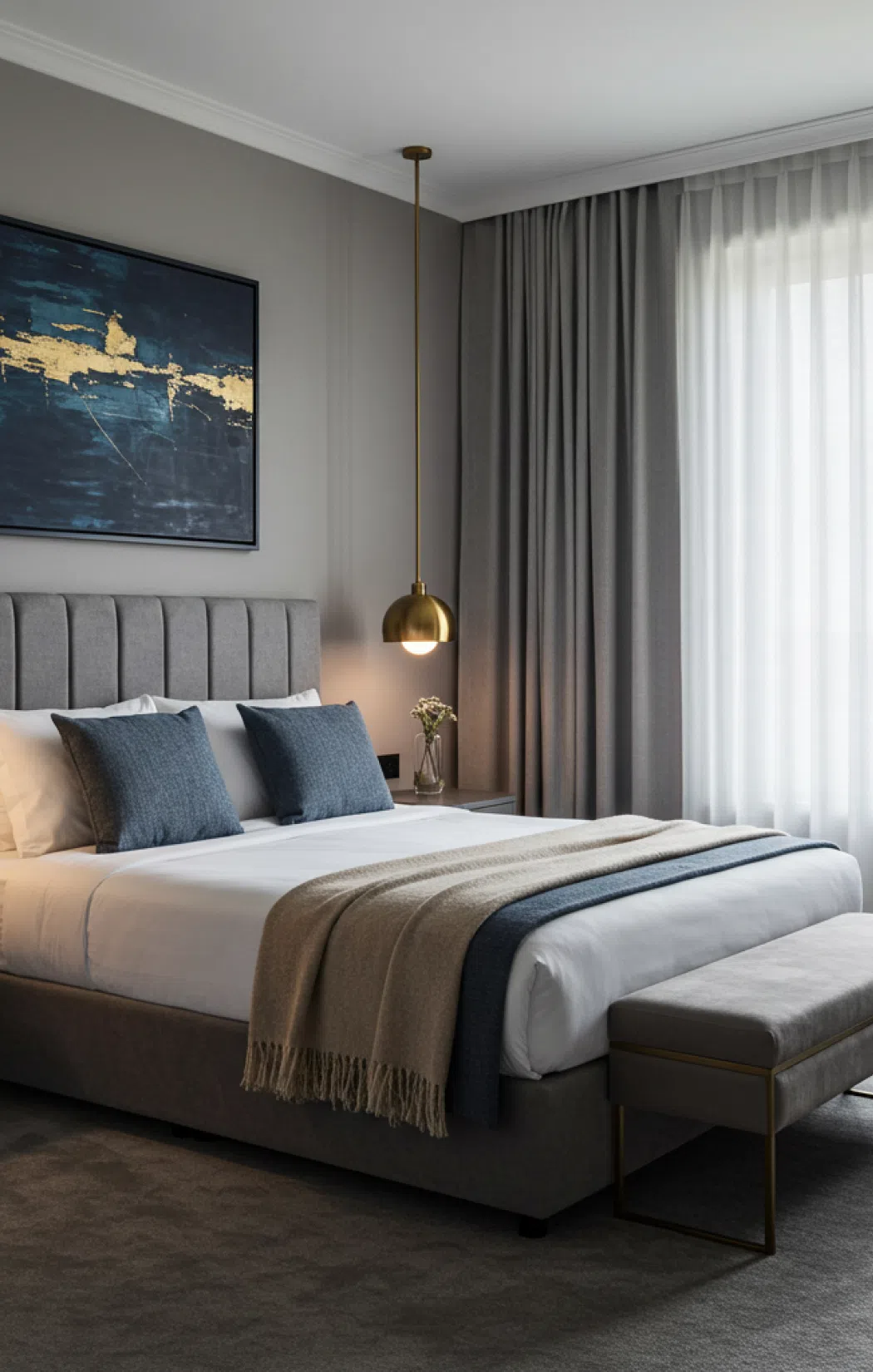
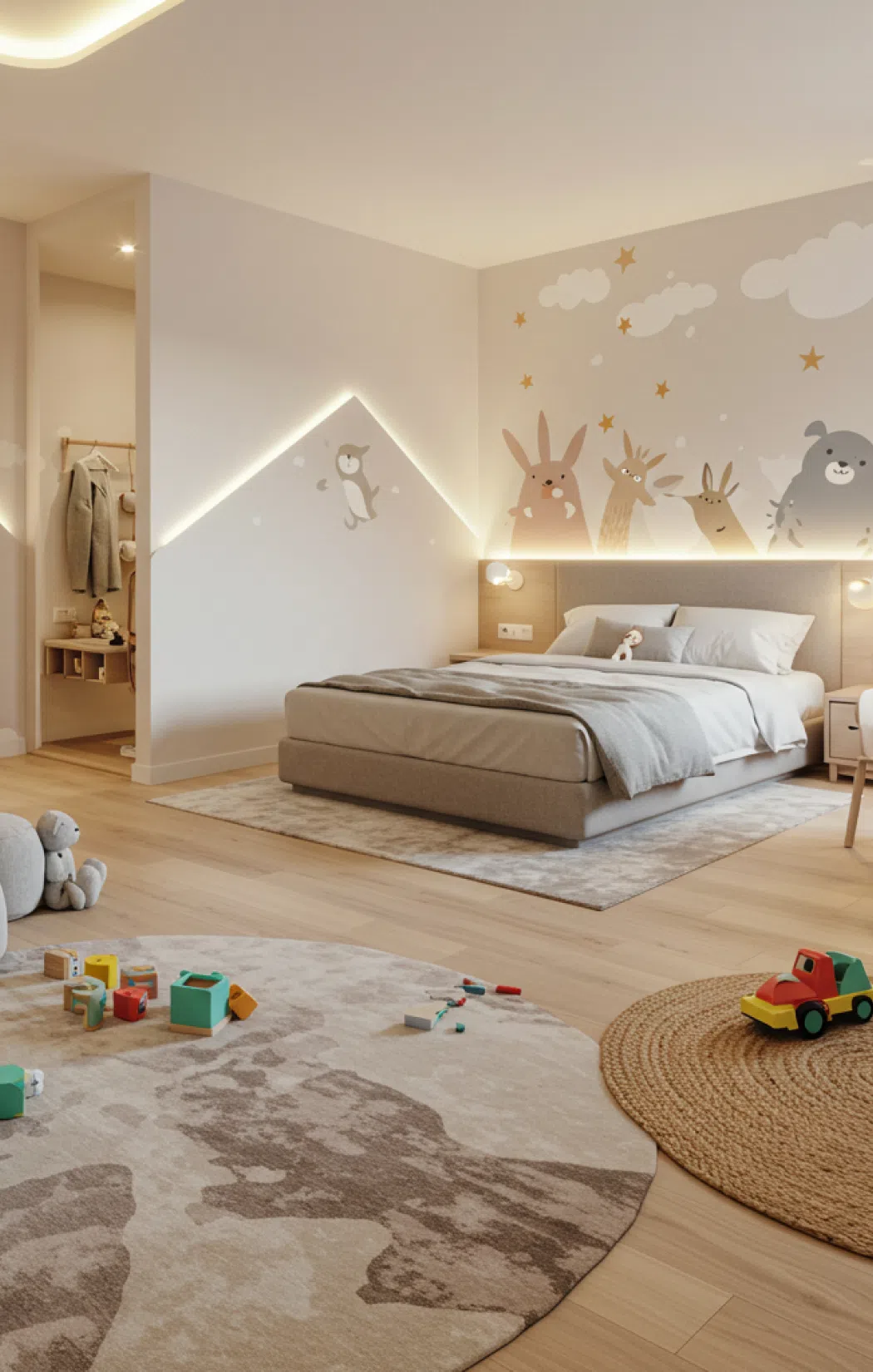
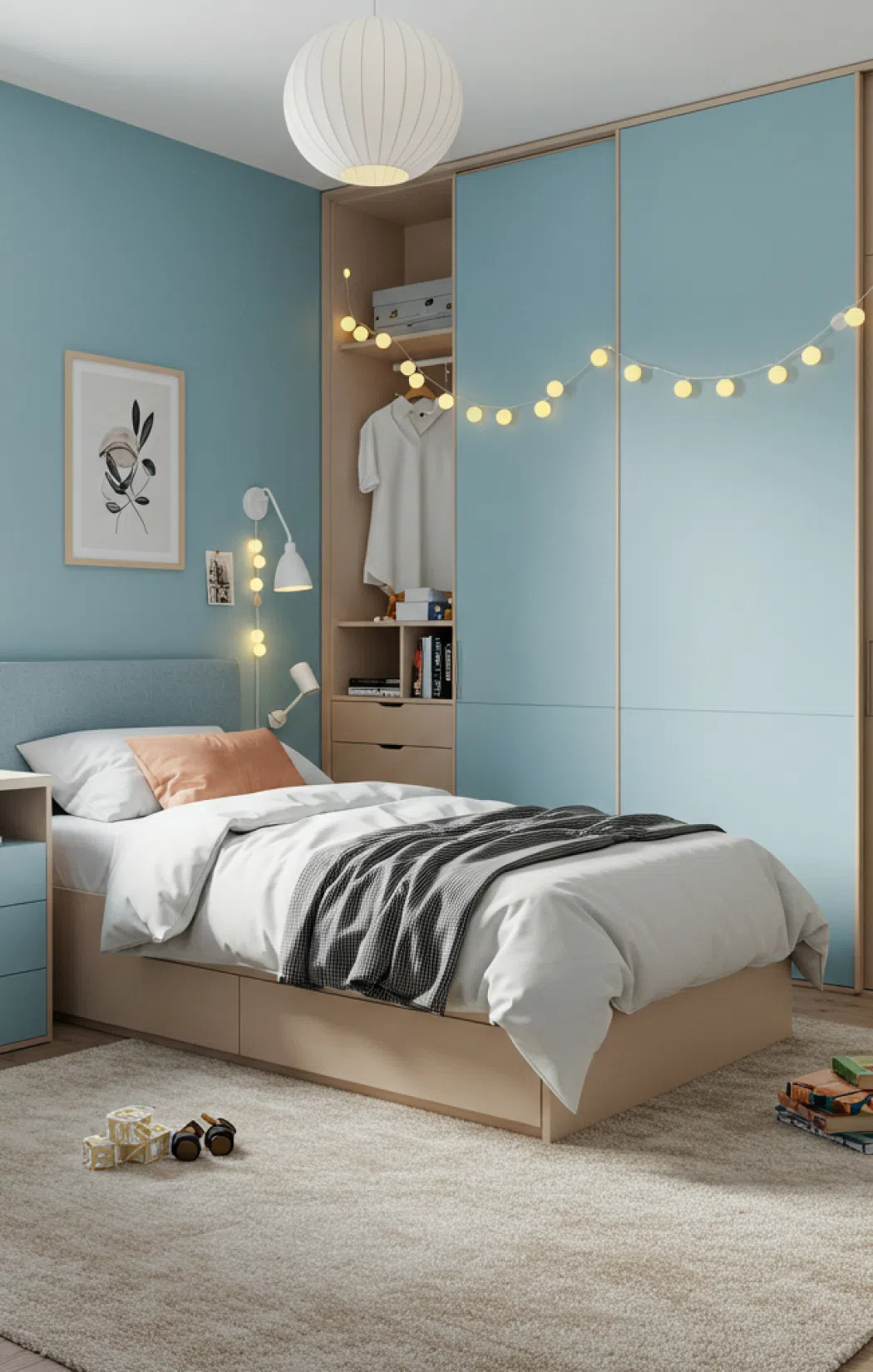
Different people have different bed requirements. Here are some specialty scenarios and tips on choosing the perfect bed for each.
If you're limited on space, consider beds designed to maximize a small bedroom:
If it's a single sleeper, opt for smaller sizes like a Twin, Twin XL, or Full. A Queen can sometimes fit in a small room but measure carefully to ensure you still have walkway clearance.
Use space-saving bed designs: platform beds with built-in drawers or ottoman storage beds can eliminate the need for a separate dresser. Loft beds (raising the bed to create space beneath for a desk or storage) are an option for kids' rooms or studios.
A Murphy bed or wall bed that folds up when not in use, or a sofa bed/daybed in a multi-purpose room, can be excellent for highly tight spaces or guest situations.
Lighter colors and minimal headboards can make the room feel less cramped. Also, consider a bed height guide in small rooms — a lower bed can create the illusion of more space.
When two people share a bed, space and motion become crucial:
A Queen bed is generally the minimum for most couples to have enough personal space. If you both like to sprawl or share the bed with kids or pets occasionally, a King might be the better choice for comfort.
If one partner is a restless sleeper, look for mattresses with good motion isolation (memory foam or pocket-coil hybrids). That way, movement on one side is less likely to disturb the other.
If you have very different firmness preferences, consider a split king adjustable bed or an airbed mattress with each side adjustable to a different firmness.
Pay attention to the bed frame's weight capacity and the mattress's edge support, especially if there's a significant weight difference between partners or if you tend to sit on the edge of the bed.
For a guest room or a bed that will be used occasionally:
You might not need to invest in an ultra-premium mattress but aim for a medium firmness that will be generally comfortable for most visitors. If you don't have a dedicated guest room, a good-quality air mattress or a fold-out sofa bed can serve.
Daybeds or futons are great dual-purpose pieces that act as couches by day and beds by night. They are perfect for home offices or studio apartments that double as guest quarters.
If the room is small, consider a Murphy bed (a bed that folds into a cabinet or wall) to free up space when not in use.
Keep versatile bedding that suits a range of climates since you may not know your guests' preferences — have a light blanket and a heavier one available.
Children have evolving needs as they grow:
Toddlers/young kids. After a crib, a toddler bed (which uses a crib mattress) can be a transition, but many parents go straight to a Twin bed with safety rails. Ensure the mattress is not too high off the ground for little ones, and consider a water-resistant mattress.
School-age kids. Twin or Twin XL is standard. Bunk beds are popular if siblings share a room or for sleepovers. Ensure bunk beds are safely constructed with guardrails and the child on the top bunk is old enough (typically age 6 or 7+).
Teens. A Twin XL or Full bed gives kids more room as they get taller. Teens might also appreciate a larger bed, like a Queen if the room allows, especially since they may use their bed as a lounge spot for homework or gaming. If you're buying a bed for a teen, think ahead — a quality Full or Queen might serve them into adulthood. Also consider stylistic longevity: a neutral bed frame that isn't too childish will last through their teenage years.
If you or a family member is tall (let's say above 6 feet 2 inches or ~188 cm), the standard bed length of 75 inches for twin/full or 80 inches for queen/king might not be enough:
Look for beds designated as XL or extra-long (Twin XL, Full XL). These typically provide 80 inches of length.
Consider a California King, which is 84 inches long (7 feet). This is often the go-to for people over 6′6″.
In some regions, you can find specialty lengths or have a mattress custom-made (for example, some European brands offer 210 cm or 220 cm long beds for very tall sleepers).
Platform beds without a footboard can also help; without a footboard, your feet can hang off comfortably if necessary, whereas a hard footboard would constrain you.
For older adults or anyone with mobility issues, the bed should facilitate easy and safe getting in and out:
Bed height. As mentioned earlier, the bed height is crucial. It should ideally allow the person to sit on the edge with feet flat on the floor and knees at about a 90° angle. Very low platform beds can be challenging to get up from, and very high beds may require a step stool, which is not ideal. Aim for roughly 20–24 inches in total.
Adjustable beds. An electric adjustable bed can be extremely beneficial for those who have trouble getting up or need to elevate their head/feet for medical reasons (such as circulation issues, acid reflux, or breathing difficulties). These beds make it easier to shift to a sitting position.
Firmness and edge support. A slightly firmer mattress often makes moving around easier (one doesn't sink in too much). Firm edge support (found in many hybrids or innerspring mattresses) prevents the mattress from collapsing when one sits on the side, adding stability.
Accessories. Consider adding safety rails or an assist handle that can slide under the mattress if the person needs something to hold onto when getting up. Also, ensure the flooring next to the bed is non-slip (place a non-skid mat under bedside rugs).
If you have a higher body weight, certain considerations will ensure your bed remains comfortable and durable:
Mattress support. Heavier sleepers tend to do better with firmer mattresses (medium-firm to firm) because they will compress the mattress more. Look for mattresses specifically rated well for higher weight, which usually means higher-density foams and thicker coils or more coils in hybrids for support. Latex mattresses are also a good option as they are durable and supportive.
Thickness. A thicker mattress (12 inches and up) is often beneficial for plus-size individuals to ensure adequate support and cushioning. Thinner mattresses might bottom out.
Frame strength. Check the weight capacity of your bed frame and foundation. Some basic frames might only hold, say, 500 lbs, including mattresses and people, whereas heavy-duty frames can support 1000+ lbs. Platform beds with solid builds or metal frames designed for heavyweight are advisable. Using at least a center support bar for a Queen or larger is essential (most manufacturers include this).
Edge support. If you frequently sit on the edge of the bed or sleep near the edge, a mattress with reinforced edges (common in hybrid or innerspring designs) will prevent that feeling of sliding off and will hold up longer under pressure.
Your local climate and home environment can influence your bed choices:
Hot climates / hot sleepers. If you live in a warm or humid area or overheat at night, prioritize breathable materials. For the mattress, innerspring and latex generally sleep cooler than all-foam beds. Some memory foam mattresses come with cooling gel layers or phase-change materials — these can help, but if you're extremely heat sensitive, an innerspring or hybrid with good airflow might be better. Use cotton or bamboo sheets that wick moisture and provide lighter bedding. A cooling mattress protector or pad (even high-tech water-cooled toppers) can be an add-on if needed. Also, platform beds allow more air circulation to the mattress than putting the mattress directly on the floor or a solid base.
Cold climates / cold sleepers. If you're often cold at night or live in a chilly environment, memory foam can be your friend since it tends to retain heat. Flannel sheets, down comforters, and wool blankets will help create a warm cocoon. Also, consider an electric blanket or heated mattress pad for winter months. With an adjustable bed, some models even have foot-warming zones as a feature in smart beds.
Humidity and allergens. In very humid climates, you'll want to prevent mold and mildew. A bed frame that lifts the mattress off the floor (to allow airflow) is essential. Use a breathable mattress protector. If allergies are a concern, consider dust-mite-resistant covers for mattresses and pillows and materials like latex or foam that are less likely to harbor allergens than an old-fashioned innerspring with lots of cavity space.
Before you finalize your bed purchase, run through this checklist to ensure you haven't missed any crucial steps:
Determine your needs. Who is the bed for (child, adult, couple, senior)? Do you have any special needs (back pain, extra height, etc.)? This will influence the size and type of a bed. For instance, a couple might lean toward a King, and someone with back pain might prioritize mattress quality and firmness.
Set a budget. Beds can range from very cheap to extremely high-end. Set a realistic budget for the frame, mattress, and bedding. Remember that a good mattress is an investment in health — allocate more if possible, as a quality mattress can last 8-10 years or more.
Measure your space. Re-check your room measurements against the bed’s dimensions. Ensure that after placing the bed, you’ll have adequate clearance to walk and access other furniture. Mark out the space on the floor again if needed to visualize the final layout.
Choose the right size. Use the size information (Twin, Full, Queen, King, etc.) to select the appropriate bed size for your needs and space. If in doubt, bigger is better for comfort, but not if it overwhelms the room. Don't forget to account for any bulk added by the frame (a bed with a wide sleigh headboard, for example, is longer than the mattress itself).
Select frame type & style. Decide on a bed frame that fits your style (modern, traditional, etc.) and functional needs (storage or not, adjustable or not). Ensure the frame’s specifications match your chosen mattress size. Check if a foundation or box spring is needed or if the slats are sufficient to support your mattress.
Research mattress options. Compare mattress types and read reviews. If buying online, ensure a generous return/trial policy (most reputable brands offer 90-120 night trials) if the mattress isn't right for you.
Check firmness and comfort. Consider using a mattress firmness guide to pick your comfort level. Remember that firmness labels (plush, medium, firm) can vary by brand, so use the trial period to confirm. If you have a partner, ensure both are happy with the choice. Many online companies allow you to exchange for a different firm if the first choice fails.
Verify dimensions & entryways. Especially for more extensive beds (King, California King) or one-piece mattresses. Make sure you can get them into your home. Measure stairwell widths, door heights, etc. Split foundations or mattresses that come rolled up (bed in a box) can ease this concern for king sizes.
Plan your bedding. Purchase the appropriate bedding for your new bed. This includes a mattress protector (highly recommended to safeguard your warranty and hygiene), at least one set of sheets that fit the mattress depth, blankets/duvets, and the right size pillows. Use our bedding guide above as needed to select these.
Look for deals and warranties. Shop during sales (holiday sales, Black Friday, year-end clearance) for potential discounts on mattresses and beds. Check the warranty terms: a good mattress often has a 10-year warranty. Bed frames might have 1-5 year warranties or none if it’s just furniture – but ensure build quality through reviews.
Delivery and setup. Decide if you need white-glove delivery (where they assemble the bed and place the mattress for you) or if you'll set it up yourself. Clear the old bed and have the room ready. If disposing of an old mattress, see if the retailer offers removal or plans a way to discard or donate it responsibly.
Test it out. Once everything is set up, sleep in your new bed for a few weeks. Nearly all mattresses have a break-in period, during which your body adjusts to a new sleep surface. If something isn't right after a few weeks (too firm, too soft, frame creaks, etc.), use the trial or return options.
Following this checklist will help ensure you cover all bases and end up with a bed you'll love for years.

Selected materials from GLOBUS magazine that you shouldn't miss are in our newsletters. Choose and subscribe - we are already preparing a letter for you.
